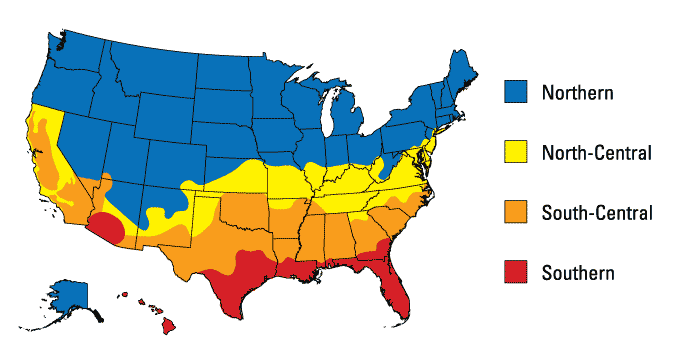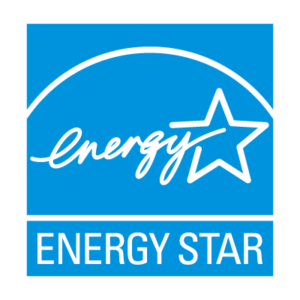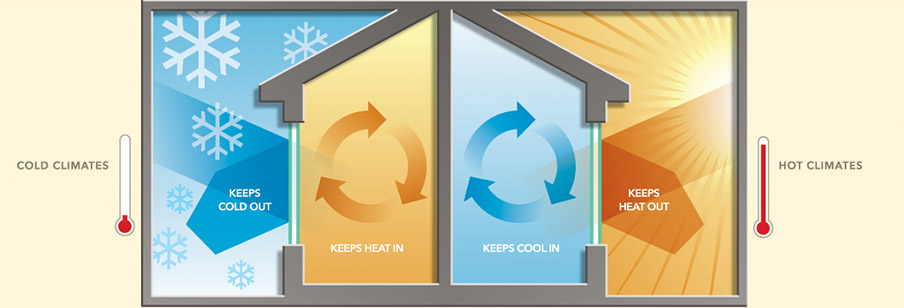High-Efficiency Replacement Windows
Our windows are built to resist the heat and cold, offering four-season comfort. This not only keeps you comfortable, but also saves you money through energy savings. Need proof? We meet or exceed the current standards for ENERGY STAR® Version 6.0 requirements in all 50 states and can exceed requirements for the Northern Zone, by up to 48% with select glass packages. Below are four common ratings that are provided for windows certified by the National Fenestration Rating Council (NFRC).
- U-Factor – A measure of the rate of heat flow through a window. A lower U-Factor indicates a higher performing window that can help reduce heating and cooling costs.
- Solar Heat Gain Coefficient (SHGC) – The amount of solar radiation allowed to pass through a window. The lower the number, the less solar heat gain and UV rays the window permits to enter.
- Visible Light Transmittance (VT) – Ranging from 0 – 1, visible transmittance is a measure of how much light passes through the window. The higher the number the more light can pass through.
- Condensation Rating (CR) – CR measures how well a window resists the formation of condensation on the inside surface. CR is expressed as a number between 1 – 100.The higher the number, the better a product is able to resist condensation.


Cardinal 366 LowE glass options keep you warmer in the winter and cooler in the summer.

All Cardinal 366 LowE glass options are UV resistant
Harmful UV rays can do more damage to your home than you might think. For example, if you don’t use the proper precautions on your windows, these rays can fade valuable items you have inside your home. Our UV resistant windows can act as a sunscreen for your house, blocking damaging ultraviolet rays without noticeably reducing the light coming inside. The Low-E coating options on our windows increase window performance and help to significantly reduce fading and sun damage to your furnishings, carpets and floor, so they stay colorful and beautiful. All of these energy saving features will save you money!


What is the Energy Star Certification?
Energy Star is an international standard for energy-efficient consumer products. This same standard applies to many products such as kitchen appliances, building products, computers, etc.
The Energy Star window certification program in the United States is designed to help you select energy-efficient windows optimized for your climate.
Energy Star replacement windows must meet minimum performance criteria to qualify for Energy Star certification. The NFRC criteria are based on whole window performance ratings and are different for each of the four United States climate zones as follows:
- Northern Zone: U-Factor of .27 or less, SHGC any
- North Central Zone: U-Factor of .30 or less, SHGC of .40 or less
- South Central Zone: U-Factor of .30 or less, SHGC of .25 or less
- Southern Zone: U-Factor of .40 or less, SHGC of .25 or less
What does Low-E mean for my windows?
The term Low-E means low emissivity. Low-E is a coating treatment applied to the window pane.
When a window is treated with Low-E, the surface emits lower levels of radiant heat. All surfaces reflect, absorb, and transmit heat. A Low-E coating reduces the amount of heat transfer through the window.
Hence, the Low-E coating reflects heat, so your home stays cooler in the summer and warmer in the winter.
The Low-E coating is applied to the inside of the pane, so it won’t scratch off.
In addition, Low-E protects against UV fading of any furniture that receives direct sunlight.
We guarantee the certification of our Energy Star replacement windows, so you will receive the best Low-E that is optimized for the Pikes Peak region.
What are the advantages of Argon Gas?
Window efficiency is further improved by using Argon gas to fill the space between the panes.
Argon gas is denser than air and therefore provides more thermal efficiency than having air between the panes. The Argon gas acts as an insulator, working in both summer and winter to protect your home from outside temperatures.
Argon gas also helps prevent frost from forming at the bottom of a window and improves the sound barrier capability of a window, thus lowering the noise in your home from outside sources.
Argon gas is odorless and non-toxic and should last the lifetime of a double-glazed window.
Will I get a return on investment by installing energy-efficient replacement windows?
The return on investment from lower utility bills depends on the type of windows you are replacing, and the style of window you are installing.
Did you know a gap in your window frames as small as 1/16 of an inch lets in as much cold air as leaving the window open three inches?
If you have old, leaky, single-pane windows with wood or aluminum frames, then you are going to enjoy a significant reduction in utility bills. We often see savings of 25% or more.
Window style is also a factor in improving the energy efficiency of your home.
Picture windows, casement windows, and hopper windows are the most energy-efficient styles of windows. This is due to the air-tight nature of the design of these windows. Therefore, you need to factor window style, window size, and the condition of your existing windows into your energy savings calculations.
You should also consider the increased value of your Dallas-Forth Worth home that will result when you install new high-efficiency replacement windows. Your home will be worth more and will gain curb appeal after you upgrade your windows.
